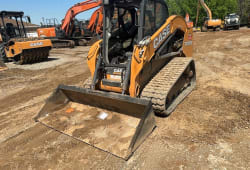Prequalification in Construction: A Complete Guide
3 Min read
)
March 4, 2025
Prequalification in construction is a crucial step in ensuring that contractors meet the necessary standards before bidding or starting work on a project. It helps project owners assess a contractor’s financial stability, safety record, experience, and overall reliability. By implementing a structured prequalification process, construction firms can reduce risks, ensure compliance, and improve overall project efficiency.
What is Prequalification of Contractors?
The prequalification of contractors is the process of evaluating a contractor’s ability to perform work according to the requirements set by project owners or regulatory bodies. This process ensures that only qualified contractors are allowed to bid on or execute a project.
Benefits of Contractor Prequalification:
Reduces project delays by selecting reliable contractors
Ensures financial and safety compliance
Enhances project quality and efficiency
Lowers the risk of contractor default
Contractor prequalification can be applied to general contractors, subcontractors, suppliers, and vendors depending on the project scope.
The Process of Construction Prequalification
:format(webp))
The process of construction prequalification involves several key steps to ensure that contractors meet necessary criteria before being considered for a project. Below is a step-by-step breakdown:
1. Submission of Prequalification Documents
Contractors must submit required documents, including:
Business licenses and registrations
Financial statements and proof of stability
Safety records and OSHA compliance reports
Insurance and bonding details
Past project experience and references
2. Evaluation of Contractor’s Qualifications
Project owners or prequalification teams assess the submitted documents based on:
Experience in similar projects
Safety performance and compliance
Financial health and bonding capacity
References and client feedback
3. Risk Assessment and Approval
Once the evaluation is complete, contractors may receive:
Approved status: Cleared for bidding and work
Conditional approval: Requires additional documentation or minor improvements
Disqualified status: Fails to meet requirements
Approved contractors are then added to a prequalified vendor list, which can streamline future bidding processes.
Types of Construction Prequalification Methods
There are different methods for prequalification in construction, depending on project requirements:
1. Open Prequalification
Any contractor can apply for prequalification
Used for government and large-scale projects
2. Selective Prequalification
Limited to a shortlist of pre-approved contractors
Helps maintain project quality and control
3. Mandatory Prequalification
Required by government agencies or large corporations
Ensures only highly qualified firms participate
Construction Prequalification Software & Digital Solutions
With advancements in technology, construction prequalification software has made the process more efficient and less time-consuming. These digital solutions help automate and streamline contractor assessments.
Key Features of Construction Prequalification Software:
Digital submission and document storage
Automated compliance tracking and verification
Risk assessment and scoring tools
Real-time updates and notifications
Top Construction Prequalification Software:
:format(webp))
Procore - Offers contractor tracking and risk management tools
ISNetworld - Focuses on compliance and safety management
TradeTapp - Helps evaluate contractor financial and operational risk
Using prequalification software enhances transparency, reduces paperwork, and speeds up contractor selection.
Common Challenges in the Contractor Prequalification Process
Despite its benefits, prequalification comes with challenges such as:
Inconsistent Documentation Requirements - Different project owners may require different documents.
Time-Consuming Manual Assessments - Evaluating contractors manually can delay project timelines.
Data Maintenance Issues - Keeping contractor records updated is often overlooked.
Best Practices for Successful Construction Prequalification
To maximize the effectiveness of the construction prequalification process, follow these best practices:
Set Clear and Consistent Criteria - Standardize evaluation metrics to ensure fairness.
Regularly Update Prequalification Requirements - Adapt to changing regulations and industry trends.
Leverage Technology - Use prequalification software for efficiency and accuracy.
Encourage Ongoing Contractor Compliance - Maintain up-to-date records for seamless future engagements.
Conclusion
Prequalification in construction plays a vital role in improving project outcomes by ensuring that only qualified contractors are involved. By using structured processes and advanced construction prequalification software, project owners can reduce risks, enhance safety, and optimize efficiency. Implementing a solid prequalification of contractors system leads to better project execution and long-term success in the construction industry.







